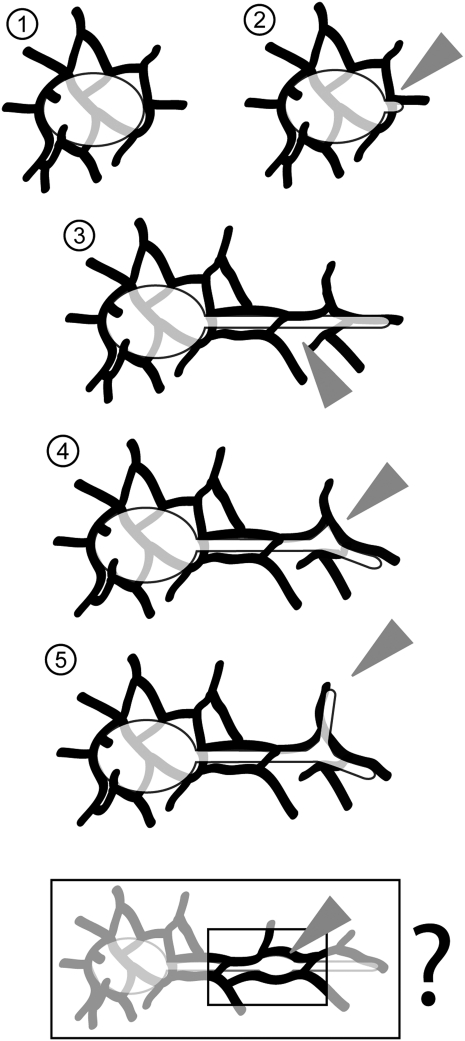Figure 4.
A model for ER-dependent stromule initiation, elongation, kink formation, and branching suggested by observations presented here. 1, A loose mesh comprising cortical ER tubules surrounds plastids localized within the cortical regions of a cell. 2, A new stromule is initiated at possible MCSs between the plastid outer envelope and the surrounding ER. Stromule extension relies on this initial tip contact and alignment with a neighboring ER tubule. 3, Over time the ER network gets remodeled. ER strands can enmesh the stromule completely within a channel. Alignment of stromules with an ER tubule dictates the angle of its extension. Subsequent ER remodeling can however result in open areas (arrowhead) where contact between stromule and ER membrane can be lost temporarily. Stromules might dilate rapidly to fill in these areas. 4, At points where ER-stromule contacts develop near ER branches (arrowhead) kinks are initiated in the stromule. Filling in of these kinked areas results in the formation of stromal triangles (arrowhead). 5, Stromal triangles are the initiation points for new stromule branches, which in turn align with extending ER tubules (arrowhead). Although further proof is required the box provides a speculative extrapolation of section 4 for the formation of oval dilations (arrowhead) along straight stromules that are extended by plastids that are part of a rapid cytoplasmic stream along with bulked ER. As discussed the model does not exclude an involvement of F-actin as a shared component between ER and stromules.

